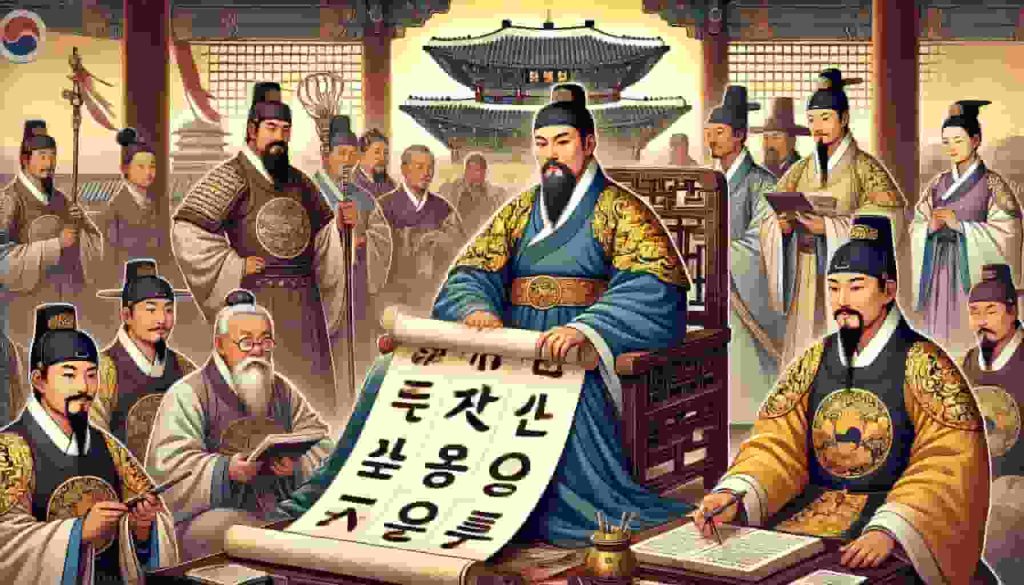3.1 History and Creation of Hangul
Hangul, the Korean alphabet, is a unique and scientific writing system that was created in the 15th century by King Sejong the Great and his scholars. Before the invention of Hangul, Koreans primarily used Classical Chinese characters (Hanja) to write, which were complex and not accessible to the common people. Recognizing the need for a simpler and more accessible writing system, King Sejong introduced Hangul in 1443 to promote literacy among all Koreans.
Hangul was designed to be easy to learn and use, reflecting the sounds of the Korean language accurately. King Sejong’s intention was to create a writing system that everyone, regardless of their social status, could learn and use.
The new alphabet was officially promulgated in 1446 in a document called “Hunminjeongeum,” which means “The Correct Sounds for the Instruction of the People.” This document not only introduced the new alphabet but also provided explanations and examples of its use.
One of the remarkable aspects of Hangul is its design. The letters are systematically arranged and have a logical structure that mimics the phonetic features of the sounds they represent.
For example, the shapes of the consonants are based on the shape of the mouth and tongue when producing the corresponding sounds. The vowels are constructed based on three elements: a dot for the sun (•), a horizontal line for the earth (ㅡ), and a vertical line for humans (ㅣ).
Hangul consists of 14 basic consonants and 10 basic vowels, which can be combined to form syllables. This allows for a wide range of expressions while maintaining simplicity and clarity. The creation of Hangul is considered one of the most significant achievements in Korean history and is celebrated annually on Hangul Day, October 9th in South Korea and January 15th in North Korea.

By learning Hangul, not only can one appreciate the rich cultural heritage of Korea, but also gain access to a wealth of Korean literature, history, and modern media. Hangul’s design and efficiency make it an excellent tool for learners and a source of national pride for Koreans.
For more detailed information on the history and creation of Hangul, you can visit resources like The National Institute of the Korean Language or read the historical document Hunminjeongeum.